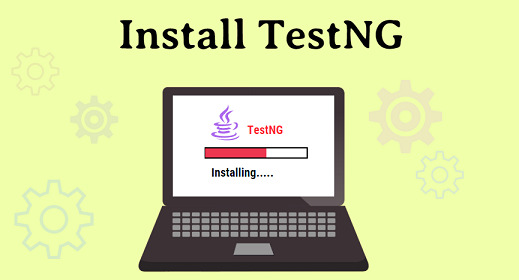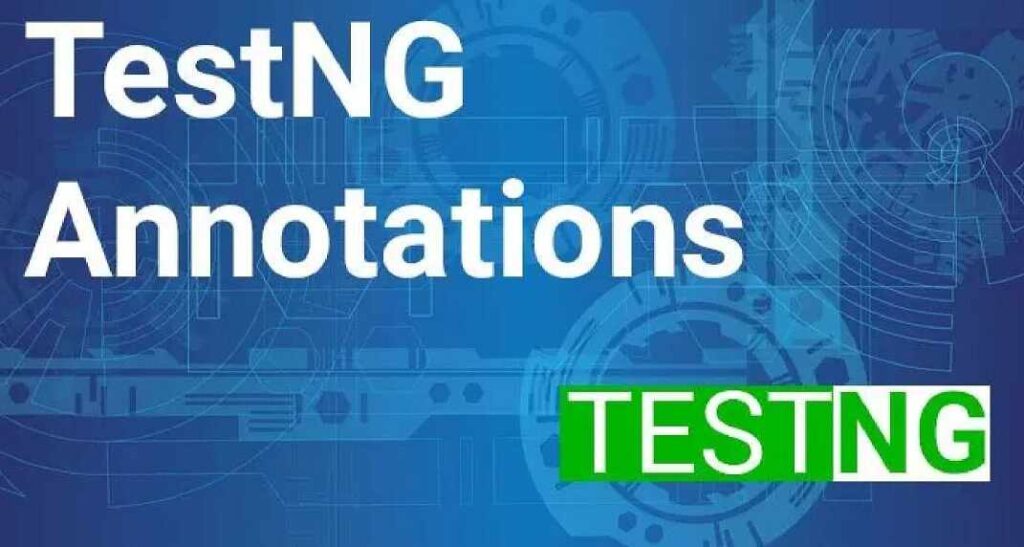TestNG, a strong testing framework that is frequently used in the Selenium environment for automating test scenarios, offers a rich set of annotations that let testers describe the test execution flow, set up test parameters, manage dependencies, and carry out numerous other tasks. The ten crucial TestNG annotations that can significantly improve the efficacy of Selenium automation testing are examined in this article.
Cédric Beust created the TestNG testing framework, which may be used for various testing requirements. The “NGNG” stands for “Next Generation,” denoting the software’s superior features and abilities. TestNG offers more flexibility in managing how your program is executed than JUnit. Using TestNG annotations, we can more efficiently arrange our tests and offer better validation points.
The Best Home Automation Technology
Prerequisites For TestNG
The following criteria must be met before you can effectively use TestNG annotations for Selenium automation testing:
1. Java Development Kit (JDK)

Make sure the Java Development Kit is set up on your computer. Java 1.5 or later can be used with TestNG annotations. If you don’t already have Java installed, you can install the latest JDK version from the official Oracle website.
2. Integrated Development Environment (IDE)

Install an Integrated Development Environment (IDE) of your choosing, such as Eclipse. An integrated development environment (IDE) offers functions like a code editor, debugging tools, and simple TestNG integration.
3. TestNG Installation

You can install TestNG in your IDE. Popular IDEs like Eclipse, IntelliJ IDEA, and NetBeans can all be quickly and simply connected with TestNG.
For instructions on installing TestNG in your particular IDE, consult the official documentation or other pertinent sources.
Now that these requirements have been met, you are prepared to explore the important TestNG annotations for successful Selenium automation testing.
How To Use Tech To Improve The Employee Experience
TestNG Annotations
Let’s look at these Selenium-specific TestNG annotations.
1. @Test
The TestNG framework is built on the @Test annotation, which enables testers to identify methods as separate test cases. This annotation allows for the separate execution of methods, resulting in results that are correct and isolated. Testers may accurately specify the test execution flow, manage dependencies effectively, and guarantee reliable and relevant validation of test results by using features like parameters, dependencies, and customization options like expected exceptions and timeouts.
Testers can develop well-organized, easily maintainable Selenium automation test suites that provide precise and meaningful data about the caliber of their software applications by utilizing the @Test annotation capabilities.
2. @BeforeMethod And @AfterMethod
A key element of successful Selenium automated testing is the use of TestNG’s @BeforeMethod and @AfterMethod annotations, which give developers a way to specify and carry out the setup and teardown procedures required before and after each test method.
Testers can initialize resources, set up the test environment, and prepare any necessary test data by specifying a method that will be called before each test using the @BeforeMethod annotation. This guarantees that the testing environment is set up correctly and prepared for the future test run.
3. @BeforeClass And @AfterClass
For handling the setup and breakdown of test classes, TestNG’s @BeforeClass and @AfterClass annotations are crucial. With the use of these annotations, testers can provide methods that run once before and once after each test method in a class, respectively. The @BeforeClass annotation is used to carry out setup tasks shared by all test methods in the class, such as initializing resources or setting up the test environment.
On the other hand, cleanup actions like releasing resources or returning the system to its initial state make use of the @AfterClass annotation. Effective use of these annotations by testers can guarantee standardized setup and takedown procedures, which will speed up test execution, enhance maintainability, and result in more reliable Selenium automation testing.
4. @DataProvider
TestNG’s @DataProvider annotation is a useful feature that enables testers to provide data to test methods, allowing the same test logic to be executed with various sets of input data. With the help of this technology, data-driven tests may be quickly expanded and varied without having to duplicate any code. It is simple to download data from numerous sites thanks to TestNG’s seamless interface with a variety of data sources, including Excel sheets, databases, and custom data providers.
By verifying application behavior against various test data sets, testers can increase test coverage, increase test reusability, and maintain a structured and effective testing approach by utilizing the @DataProvider annotation.
5. @Parameters
An easy approach to specifying parameters for test methods is through the @Parameters annotation in TestNG. Testers can use the TestNG XML configuration file to externalize test configuration and provide values at runtime. Without having to change the test code, this flexibility enables the execution of the same test case with several setups.
The ability to run tests with diverse input values is made simpler by TestNG’s support for parameterization, making it simpler to test numerous scenarios and settings. Testers can improve the flexibility and adaptability of their Selenium automation testing by utilizing the @Parameters annotation to increase test coverage.
6. @Test(dependsOnGroups), @Test(dependsOnMethods)
TestNG’s @Test(dependsOnMethods) annotation enables testers to specify dependencies between test methods, ensuring that a given test method is only executed once all of its dependent methods have successfully completed their tests. The dependent methods act as requirements for the execution of the specified test method, and this annotation provides a sequential sequence of execution. The @Test(dependsOnGroups) annotation allows for the introduction of dependencies depending on groups of test methods.
With the use of these annotations, testers are better able to manage the flow of the execution, create dependencies between tests, and make sure that the tests are carried out logically and consistently. This facilitates handling interdependent situations, controlling the sequence in which tests are executed, and managing test dependencies, all of which contribute to more accurate and effective Selenium automated testing.
7. @Test(enabled) And @Test(priority)
Testing professionals have the flexibility to temporarily pause the execution of individual test procedures without removing them from the test suite thanks to TestNG’s @Test(enabled) annotation. When temporarily eliminating tests or concentrating on particular scenarios for debugging or investigational purposes, this functionality is helpful.
Additionally, a test class’s test methods can be prioritized using the @Test(priority) annotation, ensuring that they are executed in the correct sequence. Testers can create dependencies between tests or validate various components of the application in a certain order by assigning priority values. These annotations give testers more control over how tests are executed, allowing them to streamline the testing procedure and produce accurate and dependable findings.
8. @Listeners
Using the @Listeners annotation, the TestNG framework provides flexibility for incorporating specialized listeners. Testers can construct and incorporate listeners that record different events throughout the execution of the test, such as test failures, successes, and skips, using this annotation. Testers can alter actions and behaviors based on particular events by utilizing listeners.
For instance, when a test fails, a listener may be programmed to produce certain reports or take specified actions, or it may be programmed to carry out more validations. The versatility and general efficacy of Selenium automated testing are increased by the @Listeners annotation, which gives testers the ability to expand TestNG’s capabilities and modify the test execution procedure to meet their unique requirements.
9. @BeforeSuite And @AfterSuite
The @BeforeSuite and @AfterSuite annotations from the TestNG framework are used to prepare and decompose the test suite environment before and following the execution of the complete suite, respectively. Before starting any test cases in the suite, the @BeforeSuite annotation enables testers to carry out setup chores like resource initialization and configuration to ensure that all prerequisites have been satisfied.
On the other hand, cleanup tasks, report creation, or resource release are handled by the @AfterSuite annotation when the suite execution is finished. These annotations allow testers to effectively control the test environment, ensuring that their Selenium automation tests run smoothly and orderly while protecting the integrity of the test environment.
10. @Factory
TestNG offers dynamic test class generation at runtime through the @Factory annotation. With the use of this annotation, testers can build test classes depending on certain specifications or input parameters. Testers can build several instances of test classes with different inputs by utilizing the @Factory annotation, offering flexibility and scalability in test case generation.
When it’s necessary to create several test class instances with various inputs or configurations, this functionality comes in extremely handy. Testers can customize their test suite to accommodate different testing scenarios and needs thanks to the @Factory annotation, which gives them the ability to construct test classes on the fly depending on predefined criteria.
Conclusion
As a result of their crucial functionality in defining test execution flow, handling dependencies, supplying test data, and performing various actions, TestNG annotations, in summary, play a crucial part in Selenium automated testing. The ten essential TestNG annotations discussed in this blog are strong tools for boosting Selenium test automation’s effectiveness and efficiency. Testers can build strong, stable test suites that produce accurate results by wisely utilizing these annotations. The useful features provided by TestNG annotations include the definition of test cases with @Test, setup and teardown operations with @BeforeMethod and @AfterMethod, suite-level setup and cleanup with @BeforeSuite and @AfterSuite, test prioritization with @Test(priority), and dynamic test class generation with @Factory. The freedom to manage dependencies, regulate test execution, and personalize testing workflows provided by these annotations allows testers to enhance the overall effectiveness and quality of their Selenium automation testing.
You can try LambdaTest to execute the Selenium test automation. LambdaTest is a digital experience testing platform that will allow you to set up an environment for testing your hosted web pages in parallel using the TestNG framework with Selenium on a grid cloud of over 3000+ desktop and mobile browsers. You also get a next-generation test execution platform capable of matching local test execution speeds whilst costing only as much as a flexible spot instance cloud. Added to it, get the benefits of real desktop and mobile browsers with support for all languages and frameworks and an enterprise-ready tunnel for local testing needs. Begin with an absolutely free trial today.




